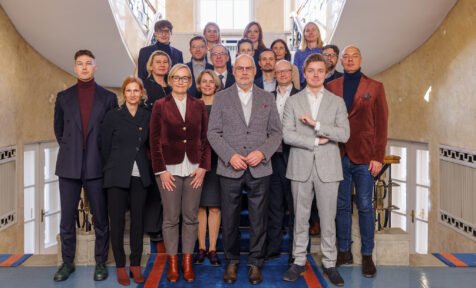For years counting, Estonia has remained an attractive study destination for international students. In 2020, despite the pandemic, 1,450 international students still found their way to Estonia to begin their studies, while others assumed online studies. One particular startup – DreamApply has played a big role in that. The full article by Blessing Oyetunde can be read on the e-Estonia webpage.
Asides from the globally-ranking universities, scholarship opportunities, and of course, access to one of the most digitised countries in the world, international students admit that DreamApply is another significant reason why Estonia is an attractive destination for studies.
Home to over 300 individual universities
Behind estonia.dreamapply.com, the sophisticated ‘Study in Estonia’ student applications portal that caters to the admission of international students into Estonian universities is DreamApply. According to Märt Aro, the co-founder, “DreamApply is designed as a front-end solution. It is a specialist software with several in-app tools designed for the admissions management of educational institutions. DreamApply is used by individual universities and also some unified national systems. At the moment, we have three national systems running on the DreamApply platform – Estonia, Lithuania, and Hungary.”
See more: Infosystems support school life
Over 300 universities in more than 30 countries now use DreamApply, but the platform’s usage isn’t limited to just universities. “Other kinds of education institutes can also use DreamApply. For example, secondary schools could also use DreamApply. In fact, some scholarship systems, student exchange systems, and even summer school setups are built on the DreamApply platform. So, you want to go for short courses? You can also find them there. Basically, the scope of DreamApply is to enable students to apply anywhere for some kind of educational purpose,” Märt establishes.
A problem that needed an urgent solution
As far back as 2001, even long before university admissions applicants quadrupled worldwide, the Chicago Tribune reported that admissions officers always hit a high burnout peak as soon as the college applications season hits. But even for the applicants, it was and still can be just as draining. The complicated and stressful admission application process winds up driving many out of the race.
“And so we were looking from the students’ perspective… how to organise the whole flow of information and data communication with the university in a simple way that eliminates complications. We understood that already, the idea of going to study in another country is a very complex one. If the application process is just as hard, then even top students might never make it to another country. And by simplifying the application system, we could reduce the workload of the admissions department and also help reduce the running costs,” Märt explains.
A major national system joined the platform
According to Märt Aro, “for the first half-year, after DreamApply was established, it was a pretty strange situation that even though tens of universities were excited about the platform, no one was bringing it onboard. Actually, before DreamApply gets accepted by any university, usually, there is a group of people that need to make the decision together. There is the head of admissions, the rector, vice-rector, and so on. You might have no less than ten people that need to come together to make the decision. And you need to be able to convince all of them because if even a single one of them is unconvinced, you’re going nowhere.” “For the national systems, it’s even more complicated. They take a lot of time to negotiate and set up. So, we don’t focus on national systems, but we do have several of them in the works. In fact, the unveiling of a major national system that’s now a part of our platform will be coming up in September,” he says smiling.
30 million users in the next ten years?
Earlier this year, DreamApply celebrated its 10th birthday. Within that 10-year frame, the company has amassed several milestones and achievements. This is while also simplifying its clientele’s admission modus operandi and helping students effortlessly reach for their ‘dreams.’ Here are some wowing statistical figures:
- 67% increase in admission applicants (in just 3 tracking years)
- 60% reduction in institutions’ email traffic
- 40% increase in admissions office staff efficiency
- 85% of users (students and institutions) find DreamApply easy to interact with
Not surprisingly, Märt looks forward to evening more exponential growth over this next decade. “Our system is now being implemented globally. At the moment, the most eastern university on our platform is in Japan, and the most western universities are in the Americas. We also have quite a few universities from various African countries, and we are open to more universities joining the DreamApply family from all parts of the world. By the end of this new decade, we hope to have grown several times larger than we are right now. We are now estimating about 3 million users on DreamApply; it would be nice to have about 30 million users there in the next ten years,” Märt envisions.
Educational innovation: a necessity
The past decade has seen an explosion of innovation in diverse sectors, but it seems the educational sector is limping. Märt believes the educational sector needs to be revised for tangible all-around development to come about and for society to be able to keep up with the industry 4.0 wave that is already upon us. “I really hope that a lot of great innovations will be done for educational development,” he says.





